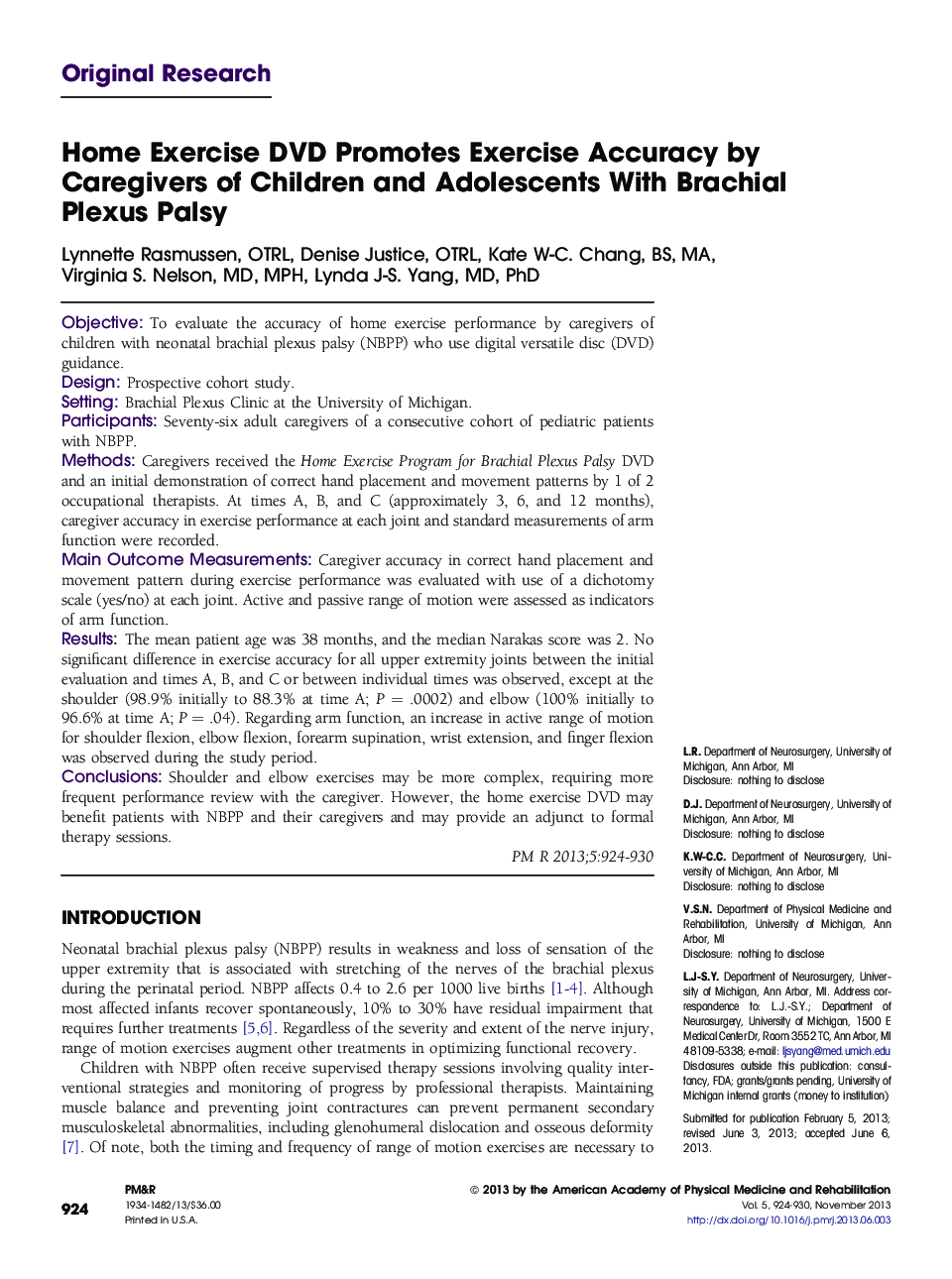| Article ID | Journal | Published Year | Pages | File Type |
|---|---|---|---|---|
| 2705636 | PM&R | 2013 | 7 Pages |
ObjectiveTo evaluate the accuracy of home exercise performance by caregivers of children with neonatal brachial plexus palsy (NBPP) who use digital versatile disc (DVD) guidance.DesignProspective cohort study.SettingBrachial Plexus Clinic at the University of Michigan.ParticipantsSeventy-six adult caregivers of a consecutive cohort of pediatric patients with NBPP.MethodsCaregivers received the Home Exercise Program for Brachial Plexus Palsy DVD and an initial demonstration of correct hand placement and movement patterns by 1 of 2 occupational therapists. At times A, B, and C (approximately 3, 6, and 12 months), caregiver accuracy in exercise performance at each joint and standard measurements of arm function were recorded.Main Outcome MeasurementsCaregiver accuracy in correct hand placement and movement pattern during exercise performance was evaluated with use of a dichotomy scale (yes/no) at each joint. Active and passive range of motion were assessed as indicators of arm function.ResultsThe mean patient age was 38 months, and the median Narakas score was 2. No significant difference in exercise accuracy for all upper extremity joints between the initial evaluation and times A, B, and C or between individual times was observed, except at the shoulder (98.9% initially to 88.3% at time A; P = .0002) and elbow (100% initially to 96.6% at time A; P = .04). Regarding arm function, an increase in active range of motion for shoulder flexion, elbow flexion, forearm supination, wrist extension, and finger flexion was observed during the study period.ConclusionsShoulder and elbow exercises may be more complex, requiring more frequent performance review with the caregiver. However, the home exercise DVD may benefit patients with NBPP and their caregivers and may provide an adjunct to formal therapy sessions.
